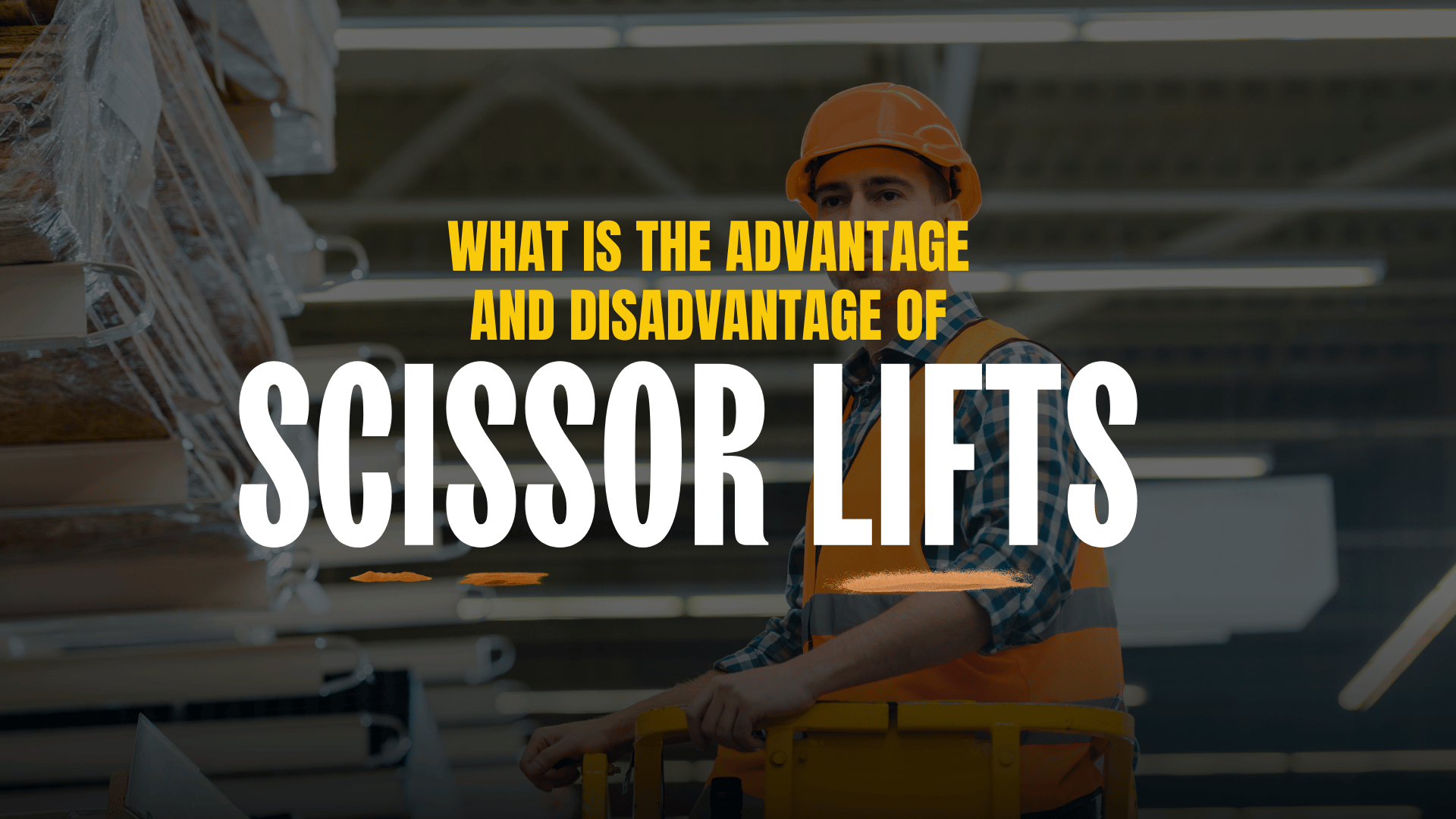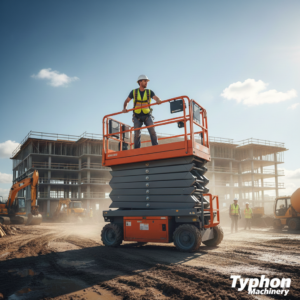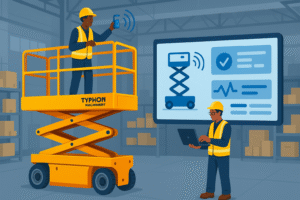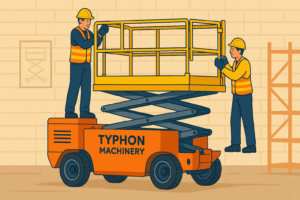Weighing the Pros and Cons of Scissor Lifts
Scissor lifts are aerial work platforms powered by hydraulics, distinguished by their unique crisscross support structure, commonly utilized to raise personnel and equipment to impressive heights. Scissor lifts are frequently utilized in various settings such as construction sites, warehouse upkeep, facility cleaning, and event setup, where reaching higher workspaces is essential. These machines create a reliable foundation that enables workers to carry out tasks effectively at different heights, all while adhering to safety standards.
Scissor lift benefits must be balanced against disadvantages by equipment rental businesses, warehouse managers, and construction workers. Mostly, scissor lifts benefit from stability, height reach, and adaptability. One might identify drawbacks in space constraints and weight lifting rules. These components influence operational safety and compliance. The benefits and drawbacks of this objective scissor lift advise industry professionals in equipment management.
What is a Scissor Lift?
Scissor lifts are aerial works platforms with supports shaped like scissors. This structure lets the platform rise vertically for more activity free from scaffolding or ladders. Safe heights in construction, maintenance, and storage are offered by scissor lifts. By use of electric or hydraulic systems, mechanical operation enables vertical movement and control, hence facilitating transportation of people and products.
On the market are many of scissor lifts. Perfect for companies and warehouses are electric scissor lifts as they are pollution-free and silent. More wheels and stronger construction help outdoor rough terrain scissor lifts to navigate difficult terrain. Compact scissor lifts would assist to close congested offices and passages.
Although the work determines the benefits and drawbacks of scissor lifts, knowledge of fundamental physics and kinds helps direct decisions. Stable scissor lifts decrease risks connected to height-related tools. These technologies boost production and surpass industry-specific safety standards.
Some contemporary versions include larger platforms, automatic leveling, built-in diagnostics for optimal usage, and more for continuous building and facility maintenance, scissor lifts might replace aerial work platforms.
Advantages of Scissors Lift – Lifting Rules in Science
For many very utilized applications, stability makes excellent scissor lifts wonderful. Supported on an expandable platform with a solid base are intersecting metal beams. Its design resists tilting particularly when tools or people are on the platform. Scissor lifts serve to reduce the danger connected with unstable platforms for above-structure installation projects.
Apart from consistency, scissor lifts are somewhat high. With 20–50-foot access, warehouse and retail ceilings may be painted, electrically fastened, and kept maintained. Improved access under ladders or scaffolds, which would have to be moved, saves money and time. Timely completion of building improves operator ergonomics and thereby helps to reduce weariness.
Scissor lift adaptation finds use in various disciplines. Most construction projects include their building frames and HVAC systems installation. They help to access high-up things by allowing warehouse inventory management. Low emissions and noise let safety-oriented electrical scissor lifts used in stores and companies. More flexible and safer work environment is provided by variable scissor lifts.
Understanding these benefits will enable participants in industrial projects or facility maintenance to choose lifting equipment pros and cons. Comparing industrial lifts across aerial platforms shows that scissor lifts meet operational safety standards and height reach across many industries.
Disadvantages of Scissor Lift: Limitations
Different scissor lift limitations might restrict its use. One despises limits on size. On construction sites and warehouses, the large footprints of scissor lifts could make handling challenging. Depending on the size of a scissor lift, a small urban development project including nearby buildings might find it difficult to install equipment. Long distance material transportation and setup might cause inefficiencies.
Scissor lifting makes weight more apparent. Depending on the equipment weight and load, any form of lifting capability should not be exceeded. Correct load distribution and work performance help to lower equipment damage and safety issues. Scissor lifts could be bigger and more expensive in heavy-load industrial environments.
Their flat design limits ground capacity of scissor lifts. Using these tools on uneven outside terrain or indoors demands for steadiness. Falling might happen when working on heights without outriggers or support. Building sites with uneven waste or warehouses with product storage plan mobility constraints might call for vertical access solutions.
Making intelligent decisions in cases where occupational productivity tools greatly affect operations efficiency rely on both advantages and drawbacks of scissor lift. Companies should first evaluate site circumstances and operational needs even if they support more larger activities.
Comparing Scissor Lifts to Other Aerial Work Platforms
Scissor lifts are sometimes mistaken for boom lifts and other aerial work platforms even if they provide simpler access. Among these systems, suitability for design, usefulness, and application differs greatly. Boom’s long arms can swing vertically and horizontally to eliminate obstacles. Folding scissors only increase the platform vertically. Analysis of building tools hinges on an awareness of these variances.
When one looks at aerial work platforms for different purposes, situational advantages follow naturally. Because to their durability and tiny scale, scissor lifts are ideal for job in confined areas or at heights without outreach. For lateral reach operations like maintaining building signs or accessing utility connections, Boom lifts might especially be useful. The platform to be utilized will depend on site design and kind of work done.
Choosing a tool for the work also requires considering its features. Load distribution affects safety of scissor lifts as certain kinds have weight constraints that limit lifting power. Boom lifts could carry more tools or more people, therefore reducing the maintenance effectiveness.
Choosing among scissor lifts and other aerial work platforms depends on operational and site-specific considerations. Professionals may maximize output and safety by comparing the benefits and drawbacks of every equipment against its capabilities at certain work locations, such high-rise structures or warehouse maintenance.
Safety Considerations When Using Scissor Lifts
Using scissors lifts in buildings and warehouses makes safety very important. Safety training assists vertical operations to lower hazards. Training should include load restrictions, machine setup, and emergencies. Simulated training helps operators to recognize unstable terrain or overhanging electrical cables. Training ensures operators’ safety in their jobs.
Choose scissor lifts first considering safety. Standard equipment includes tilts sensors, automated brakes, and tipping guardrails. Overload sensors alert workers to weight limits, therefore lowering structural danger. Buying models with improved safety measures helps to reduce construction mistakes.
Maintenance Requirements for a Scissor Lift
If scissor lifts are to be helpful, they need frequent maintenance. Every day check battery, tire pressure, hydraulic fluid, oil, cleanliness, battery to avoid running issues. Manufacturers suggest either monthly or quarterly comprehensive checkups based on use. Through scheduled maintenance, preventing breakdowns may assist to enhance equipment longevity and safety.
Typical scissor lift maintenance mistakes pose the risk of operator safety and performance. Ignoring regular inspections might lead to late-discovered wear-and- tear or untreated mechanical flaws causing machine downtime. Ignorance of hydraulic systems may lead to serious operational problems endangering the stability and elevation of height operations. Regular preventative maintenance increases production, lowers repair costs, and helps to lower equipment failures.
Professionals in building, warehousing, and facility management might assess scissor lift benefits and disadvantages against safety and maintenance needs to guide choices.
Choosing the Perfect Scissor Lift for your Project
Choosing a scissor lift for a work calls for careful consideration in many areas. First considerations are the height requirements. Most scissor lifts range between 19 and 50 feet. Installation of overhead lights or maintenance calls for the examination of an area considering operating height. Analysis of platform height and lift capabilities might help you choose your model.
Load capacity influences the decisions on scissor lift as well. Smaller machines have a 500 pounds weight restriction; larger ones have over 1,500 pounds. One might help to cut weight by thinking through supplies and platform equipment. Apart from the weight of the workers, equipment raised over this limit could lead to unsafe working conditions or performance problems.
Choice of scissor lift relies on the environment. While outside lifts might need rough-terrain hydraulic lifts, inside elevators could aid to lower pollution levels. Surface type—asphalt instead of gravel—slope grades and wind exposure determines straight stability.
Renting or Buying Scissor Lift:
Apart from these pragmatic factors, stakeholders have to choose if leasing or purchasing a scissor lift would benefit their business. Renting agreements let consumers choose models depending on the length of the project without making initial payments. Long-term model usage can make buying an alternative reasonable in terms of availability and cost. Operating frequency and financial restrictions will determine whether one chooses to buy or rent.
Scissor lifts provide stability, height access, and variation for warehouse and industrial usage. Topography, weight, terrain, and short area size all limit load capacity on uneven ground. Buying machinery requires a grasp of these components.
Sort operational needs prior to using a scissor lift. Those elements will determine if a scissor lift satisfies project requirements like height, weight, and working environment. This exhaustive study guides decisions on equipment usage, therefore improving operating performance and safety.





